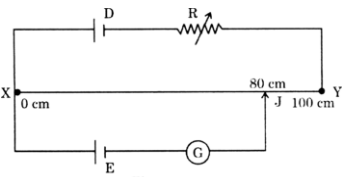 Short Answer Type
Short Answer Type(i) What is meant by:
(1) Drift velocity and
(2) Relaxation time?
(ii) A metallic plug AB is carrying a current I (see Figure 4 below). State how the drift velocity of free electrons varies, if at all, from end A to end B.

(i) State any two differences between a moving coil galvanometer and a tangent galvanometer.
(ii) What is the use of a Cyclotron?
When an alternating emf e = 300 Sin (100 πt + π/6) Volt is applied to a circuit, the current I through it is I = 5.0 Sin (100 πt - π/6) ampere. Find the :
(i) Phase difference between the emf and the current.
(ii) Average power consumed by the circuit.
In which part of the electromagnetic spectrum, do the following radiations lie:
(i) Having wavelength of 20 nm
(ii) Having frequency of 10 MHz
(i) Wave length of 20 nm will he in the r-ray region of electromagnetic spectrum.
(ii) Frequency of 10 MHz will be in HF (High Frequency) region of spectrum.
(b) In youngs double slit experiment, the distance between two consecutive bright fringes or dark fringes is called fringe width or fringe separation.
It is denoted by β
where,
D = distance between slit and the screen,
d = distance between two slits.
λ = Wavelength of monochromatic light.
We can increase the fringe width, without changing the source of light by these ways:
(i) By increasing the distance between slits and screen (D).
(ii) By decreasing the distance between two slits (d).
